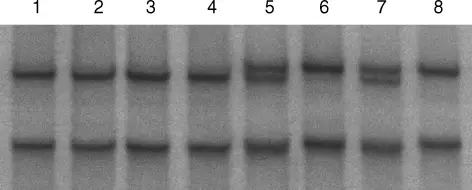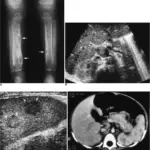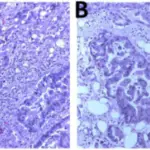Wiskott–Aldrich syndrome is a rare X-linked recessive disease characterized by eczema, thrombocytopenia (low platelet count), immune deficiency, and bloody diarrhea.
What is the Pathology of Wiskott–Aldrich Syndrome?
The pathology of Wiskott-Aldrich syndrome is:
-Etiology: The cause of Wiskott-Aldrich syndrome is a defect in the WAS gene located on the short arm of the X-chromosome at the Xp 11.22-23 position.
-Pathogenesis: The sequence of events that lead to Wiskott-Aldrich syndrome are a genetic mutation in the gene encoding Wiskott-Aldrich syndrome protein (WASp) affecting the immune system and inducing a state of immunodeficiency.
-Morphologic changes: The morphologic changes involved with wiskott–aldrich syndrome include eczema, reduced platelet size and function, and immunodeficiency with decreased T lymphocyte function, and an inability to make antibodies to carbohydrate antigens.
How does Wiskott–Aldrich Syndrome Present?
Patients with Wiskott-Aldrich syndrome are typically males. Age at presentation ranges from birth to 25 years old. The symptoms, features, and clinical findings associated with Wiskott-Aldrich syndrome include: eczema, frequent nose bleeds, chronic infections, anemia, arthritis, inflammatory bowel disease, nephritis, and vasculitis.
How is Wiskott–Aldrich Syndrome Diagnosed?
Wiskott–Aldrich syndrome is diagnosed by a test that measures the amount of platelets. a genetic test that reveals presence of a mutation in the Wiskott-Aldrich syndrome gene. a blood test that demonstrates absence of the Wiskott-Aldrich syndrome protein in the white blood cells. Tests include gene sequencing, flow cytometry, quantitative immunoglobulins levels, complete blood counts.
How is Wiskott–Aldrich Syndrome Treated?
Wiskott–Aldrich syndrome is treated by stem cell transplant (also known as a bone marrow transplant). Antibody infusions because B cells may not produce antibodies against infections.
What is the Prognosis of Wiskott–Aldrich Syndrome?
The prognosis of Wiskott–Aldrich syndrome is poor. The average age of survival is 15 years old.



